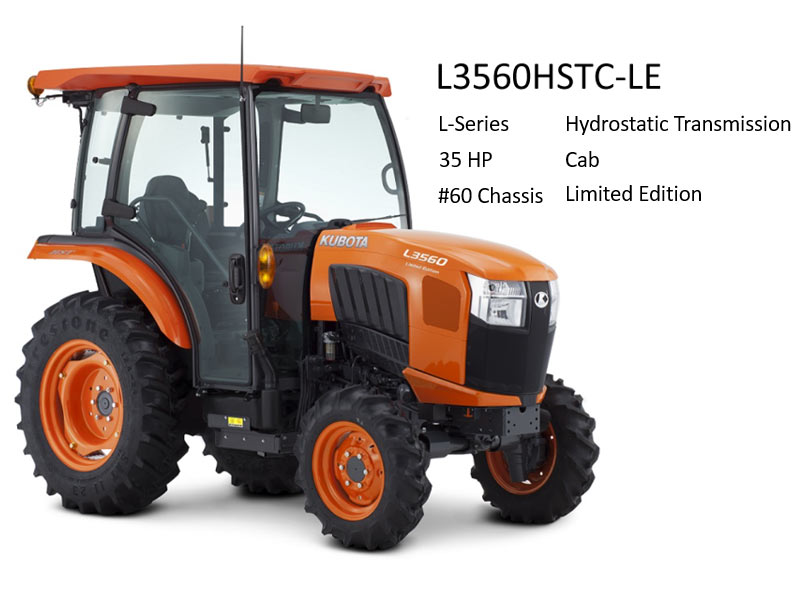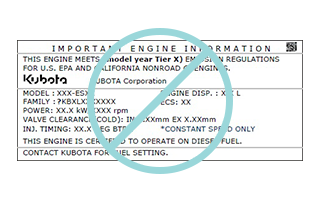Kubota Tractor Corporation pays their marketing department a lot of money to come up new model and series numbers each year. These new numbers can be confusing and make you think you need to be a Navajo Code Talker just to understand what you’re looking at. The good news is that you don’t have to be. In this post, we’ll take a look at Kubota Model numbers and break down what they mean and what they can tell you about a specific Kubota tractor.
- Kubota Rtv900 Serial Number Decoder
- Kubota Excavator Serial Number Decoding
- How To Read A Kubota Serial Number

Kubota has 3 basic tractor model types:
This is the KUBOTA VIN decoder. Every KUBOTA car has a unique identifier code called a VIN. This number contains vital information about the car, such as its manufacturer, year of production, the plant it was produced in, type of engine, model and more. Q: Where is the serial number located on a Kubota RTV? A: On the RTV500, the serial number is located on the passenger side next to ROPS between the cargo box and the back of the seat/cabin. On the RTV900, it’s on the driver side, on the frame rail between the battery and cargo box. The serial number plate might be lost. The stamping might be worn to the point that it is unreadable. In most cases it is impossible to ever determine the original serial number. The serial number was typically marked in only one location on the tractor. The engine serial number is usually unrelated to the tractor serial number (certain Farmall.
- B : 18-30hp subcompact tractors
- L: 30-60 hp compact tractors
- M: 40- 135 hp Tractors

There is only one variation, which is a X in the model. This X signifies that it is a smaller version of the model before it. Therefore, a BX tractor is the smallest series, or a small version of the B series and likewise, an MX tractor is the small version of the M Series.
Step 2: Behind the numbers
After the series letters there are numbers ex L4060. After step 1 we know that the L stands for Kubota’s line of L series tractors. But what about the numbers?
- The first number after the letter is the horsepower. This is an 40 horse Compact tractor.
The Second number tells us what chassis the tractor is on. This is where things can get a little tricky, especially if you’ve got an older Kubota. For the last 10 years the Grand L Series Kubotas have been denoted with 30 a 40 or a 60 after the number. The standard L Series has been 00 or recently 01. For tractors 10 years or older, please contact your dealer for series information.
Click here to learn the difference between the Grand L and Standard L Series
Therefore, a L3901 is a 39 horsepower standard L tractor. Whereas the L4060 we looked at before is a 40 horsepower Grand L Tractor.
- The BX Series have ended in 50 60 and the most recent are 70.
- The B Series ends in 20 and 50, the 50 is the larger chassis.
- The L Series presently has 01 (standard L) and 60 (Grand L- Larger Frame).
- The MX Series is 00.
- The M Series is denoted by 60, X, or GX- These are the big 100+ hp tractors.
Step 3: The Fender Letters
On the rear fender of the L Series and up there are usually 3 letters, 4WD, HST or GST. These denote which type of transmission the tractor has.

4WD: Stand L Gear Drive*
GST: Glide Shift (Only available on Grand L Models)
Kubota Rtv900 Serial Number Decoder
*Note: All B series tractors have 4WD but most come with a hydrostat transmission.
Step 4: Loader Numbers

Kubota Excavator Serial Number Decoding
A lot of people only see the loader number on the tractor because the loader covers up the tractor numbers. This is common, don’t worry if you’ve made that mistake. The loader numbers are the easiest to figure out. Basically it’s LA which stands for Loader, then the lift capacity in kilograms. So a LA 1154 can lift 1154 kg. The easy way to guess that in lbs. is to double the number, so a LA 1154 can lift roughly 2,308 lbs.
How To Read A Kubota Serial Number
Well that is the high level view of Kubota model numbers as they are right now. It’s hard to guess how they might be further on down the road. As for older models, you’ll have to call in and ask. If you have any further question feel free to come in and chat or give us a call!